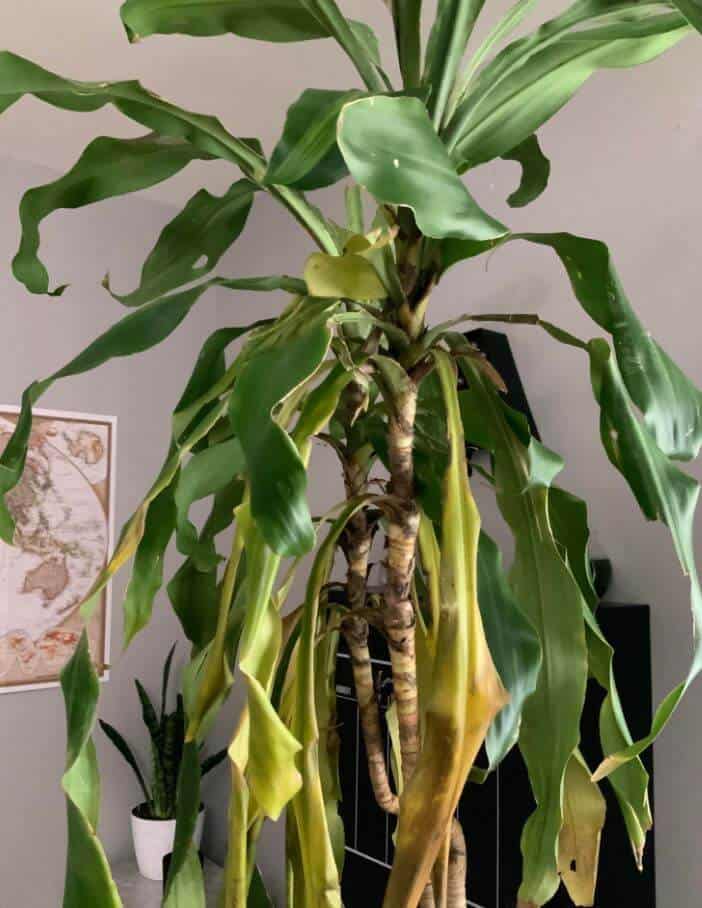Last Updated on October 3, 2023 by a Friendly Gardener
Dracaena houseplants are lively additions to just about any corner of the home or office. Still, just like other species, they have a few issues that can result in foliage turning yellow and perhaps even brown. What’s the problem? There are a variety of reasons that the corn plant’s foliage color may be changing, including overwatering, inadequate humidity, and pest infestations. Environmental temperature, improper light, and soil salt buildup, among others. While these plants are beautiful additions to indoor décor, they can cause worry when foliage suddenly exhibits traces of discoloration. Let’s consider the more probable causes of corn plant leaves turning yellow.
Why Are My Corn Plants Turning Yellow?
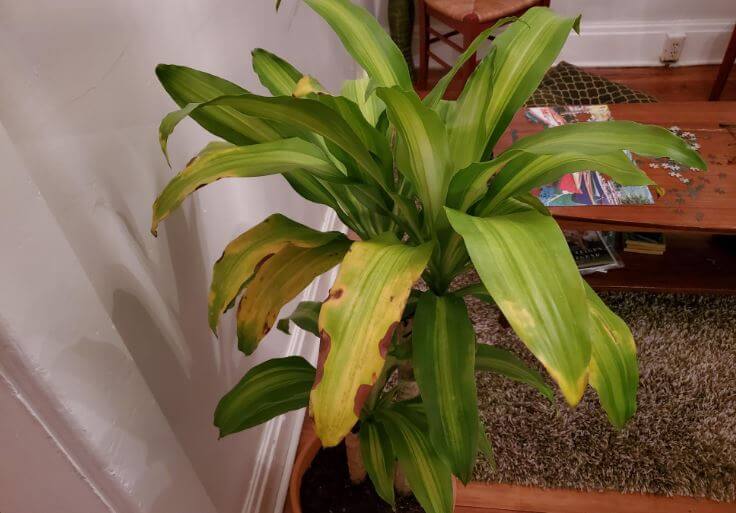
The Dracaena fragrans can have their health negatively affected by various things, meaning that the cause may not be immediately apparent. But the decline in health can be worrisome, so how can one identify the problem and what can be done to fix it?
The most common causes of corn plant’s leaves turning yellow include:
- Inadequate humidity
- Improper watering
- Water quality
- Pest infestations
- Sudden changes in environmental temperatures
- Salt buildup in soil
- Improper lighting
So, it’s challenging to identify the cause, with so many to choose from. Unfortunately, when left unattended, many of these issues can lead to stunted growth and can occasionally be fatal. Let’s examine the problems and what to do if one is afflicting your corn plant.
Inadequate Humidity

A lack of humidity can be a real problem for corn plants as they are highly sensitive to environmental humidity. Corn plants love high humidity, so it can be a severe problem when levels drop significantly. With low humidity, leaves may begin to droop and develop brown edges. Leaves will turn yellow, and the plant will become dehydrated. Eventually, the foliage will wither and fall off and may quickly spread across the entire plant. If these symptoms begin, try to increase humidity levels immediately.
What to do
To improve environmental humidity quickly and effectively, use a space humidifier or place a pebble tray beneath the plant’s container to improve humidity around the plant. You can also mist your plant regularly but must do so every other day. Otherwise, it will be insufficient.
Improper Watering
Improper watering can begin with yellowing leaves but rapidly place a plant at risk. Improper watering can take the form of underwatering or overwatering. Overwatering is the more common cause of yellowing leaves because it leads to soggy, waterlogged soil, which can, in turn, create the conditions for fungal infections and root rot, which are difficult to treat and often fatal. Overwatering generally leads to limp leaves that become soft.
Underwatering can be less problematic but still a severe issue. The soil bed will feel dry to the touch, and leaves may begin to turn crispy and crumble.
What to do
Remove your Dracaena plant from its pot and examine the root system. If they are swollen, mushy, translucent, dark, and foul smelling, you have an overwatering issue and perhaps the beginning of root rot. Remove the plant and repot it in fresh soil. Allow it to rest for several days before watering again. If the roots appear damaged and affected by root rot, you must trim away sick roots to save the plant before repotting.
For underwatering, poke the soil to feel for moisture approximately three inches deep. If the soil is dry, water your plant. Corn plants generally require watering weekly.
Water Quality
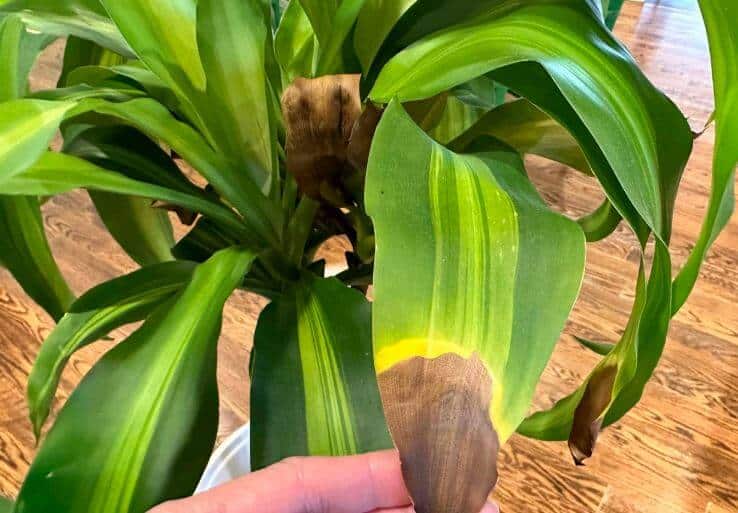
Corn plants are sensitive to water quality. Try not to use municipal tap water as it is usually chemically treated, such as fluoride and chlorine, which are common to tap water. These chemicals will poison the plant, causing the foliage to yellow.
What to do
Try to water your corn plant with collected rainwater, filtered bottled water, or distilled water. If this is not an option, use tap water but leave it out for approximately 24 hours so that chemicals will dissipate through evaporation.
Pest Infestations
A corn plant turning yellow can also be caused by pest infestations. Corn plants tend to be more susceptible to pest infestations when the plant is in a debilitated state, weakened by other issues. When dracaenas are stressed, pests will be attracted and attack the plants. Spider mites are particularly fond of attacking these plants. As sap suckers, they will drain the nutrients from your plant, causing dehydration and further damage. Other pests to watch out for are mealybugs and scales. Treat pest infestations as soon as possible, as these bugs proliferate quickly.
What to do
Take your corn plant outdoors or to the shower and spray it with a jet spray to remove most pests. Prune all damaged foliage. Treat your plant with insecticidal soap or neem oil spray for several weeks.
Sudden Changes in Environmental Temperatures
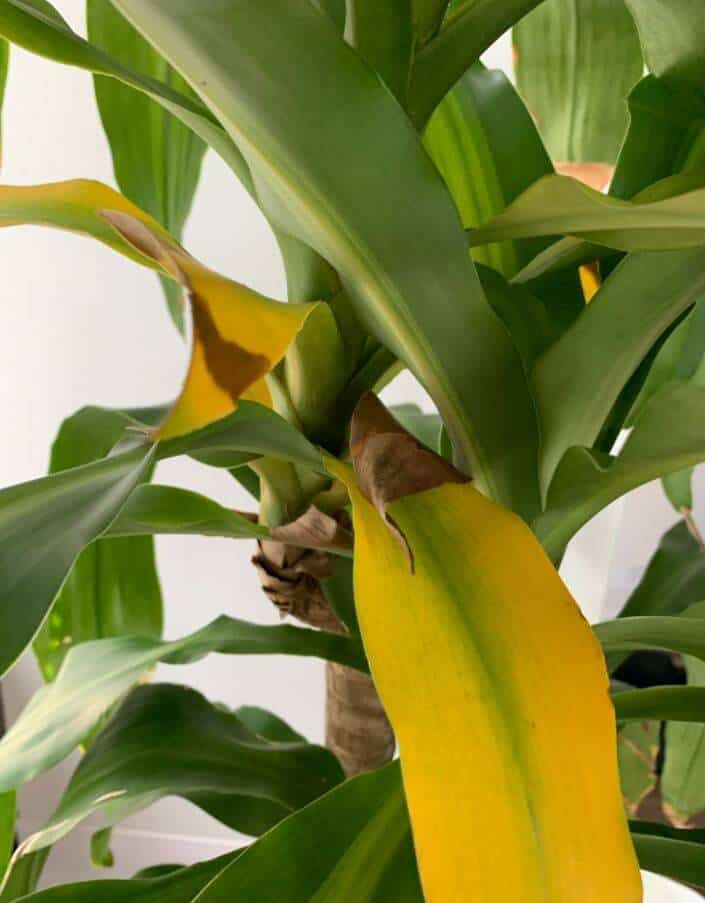
Corn plants suffer when the environmental temperature suddenly changes, and yellowing leaves are a symptom of discomfort. The corn plant is susceptible to colder drafts. It requires environmental temperatures measuring between 70° and 80°F. This is crucial in the spring and fall seasons when evening temps tend to drop.
What to do
Keep your plant in a spot within its preferred temperature range. If you usually keep your plant near a window, consider moving it.
Salt Buildup in Soil Beds
Leaves on corn plants turning yellow can be caused by soil that harbors a salt buildup. Fertilizers often contain high concentrations of phosphates with higher levels of salts. Perlite also can have them.
What to do
When fertilizing, use a balanced liquid fertilizer and dilute it to half-strength before application. Only fertilizer corn plants from early spring through mid-fall. If you suspect salt buildup in the soil, flush the dirt with spring water until it pours from drainage holes.
Improper Lighting
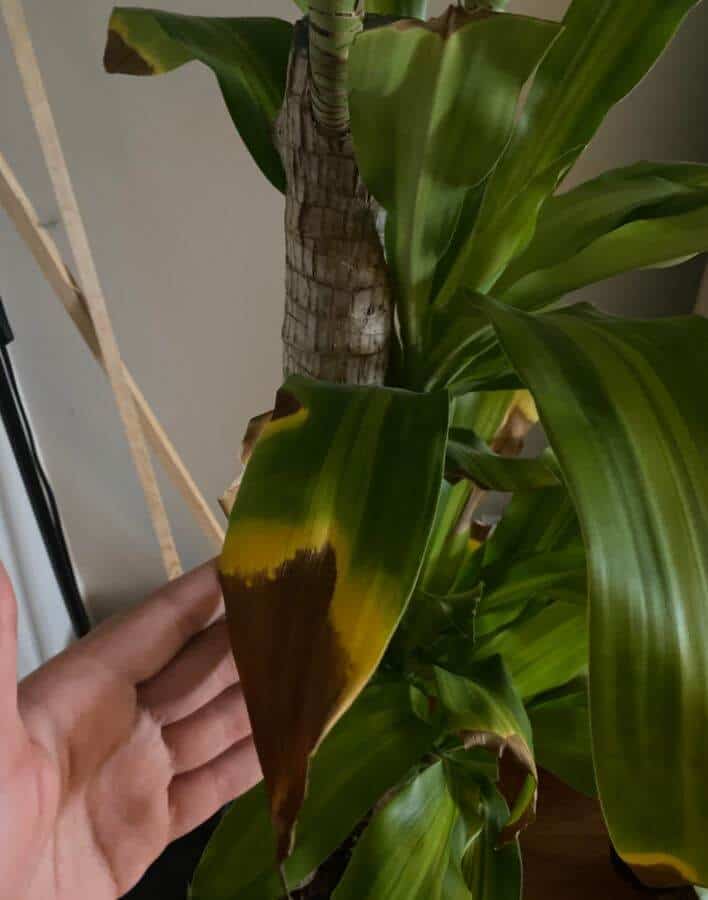
Corn plants prefer very bright but indirect sunlight and require several hours daily. Without adequate indirect light, your corn plant will suffer, and leaves may begin to turn yellow. Sunlight is essential to the plant’s ability for photosynthesis and nourishment.
What to do
If you suspect inadequate light as the culprit, move your corn plant to a new location to prevent scarring foliage. Without enough sunlight, leaves will turn yellow and begin to droop.
Final Considerations
Other causes may include a nutrient deficiency such as a lack of potassium, or in the case of lower leaves yellowing, it may simply be old age. Whatever the reason, it’s wise to pinch off yellow leaves from corn plants as they will not return to their original green hue. This will also allow the plant to channel energy to healthier foliage.

